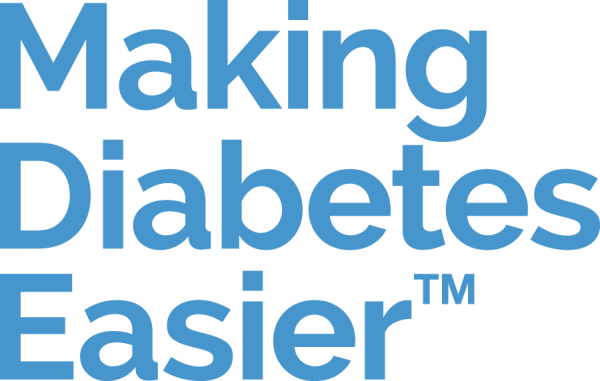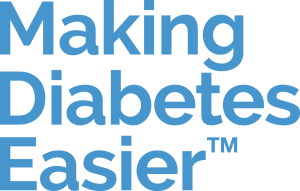Hypoglycaemia: symptoms & causes

Hypoglycaemia: symptoms & causes
Hypoglycaemia — also known as low blood glucose or low blood sugar — is when your blood glucose levels drop low enough that you need to take action to bring them back to your target range [1, 2].
Hypoglycaemia is a common complication among people with type 1 diabetes [2] — on average, a person with type 1 diabetes may have up to two mild hypoglycaemic episodes (which are called ‘hypos’) a week [1]. Hypos can also occur in people with type 2 diabetes who take insulin or other diabetes medicines [1, 2].
In this article, we review the causes, symptoms, and risk factors for hypoglycaemia in people with diabetes.
What is hypoglycaemia?
Hypoglycaemia is an abnormally low level of glucose in your blood [1, 2, 3].
Blood glucose levels can vary throughout the day, depending on a number of different factors [1]. This is completely normal — as long as it varies within certain ‘healthy’ parameters [1]. However, if it drops below a healthy threshold, it can be harmful [1].
Hypoglycaemia occurs when blood glucose levels have dropped to a point that is considered too low and potentially harmful for you [1, 2]. For most people, this is a blood glucose reading lower than 3.9 mmol/L or 70 mg/dL [2, 3]. However, this number may be different for you, so you should discuss it with your healthcare team [1, 2].
What causes hypoglycaemia?
Several factors can cause hypoglycaemia in people with diabetes. These include:
- Taking insulin incorrectly. For example, taking too much insulin or taking insulin at the wrong time in relation to exercise or meals [3]
- Not eating enough carbohydrates. This may be due to delaying meals, skipping them altogether, or fasting overnight [3]
- Having too much alcohol, which can cause your body to produce less glucose [3]
- Exercising too much or losing weight, which causes your body to use more of its carbs or more of the glycogen stored in the liver [3]
- Having other underlying conditions, such as gastroparesis (which causes the stomach to empty food later and more slowly than normal) or a gradual loss of kidney function [3]
- Being sick and finding it hard to eat or to keep food down [2]
- Being under a lot of stress [3]
- Increased insulin sensitivity can also cause hypoglycaemia — this may happen during the night, due to exercise or weight loss [3]
One survey has shown that overall, not eating enough food is the most common cause of severe hypoglycaemia [3] — accounting for 43% of cases in people with type 1 diabetes and 47% in those with type 2 diabetes [3].
Risk factors for hypoglycaemia
The most common risk factor for hypoglycaemia occurring in people with diabetes is aggressive insulin therapy to achieve tight blood glucose management [3] — i.e. too much insulin [1]. However, some people are also more prone to developing hypoglycaemia than others.
Some of the common factors that put some people at increased risk of hypoglycaemia include:
- Having type 1 diabetes [2]
- Taking insulin [2] — in particular, the mismatch of insulin timing, amount, or type of carbohydrate intake [3]
- Taking other diabetes medication that stimulates your body’s production of insulin, such as sulfonylureas and meglitinides [2, 4]
- Older age — being older than 65 [2, 4]
- Having a history of severe hypoglycaemia [3]
- Having had diabetes for longer [4]
- Prolonged insulin use [4]
- Having chronic health conditions such as kidney disease, cardiovascular disease, heart failure, cognitive impairment, depression [4]
- Having critical illnesses such as kidney failure or liver failure, sepsis or severe trauma [3]
Other factors that may increase risk include fasting regularly, such as when observing Ramadan [4]. Travelling across different time zones can also disrupt glycaemic management due to irregular meal times and meals that don’t contain enough carbohydrates, or travelling unexpectedly after taking fast-acting insulin [3].
Social determinants of health and hypoglycaemia risk
There are also social factors that determine a person’s risk of hypoglycaemia [4]. These are called ‘social determinants of health’, They include:
- Food insecurity [4]
- Lower socioeconomic status [4]
- Poor health literacy [4]
- Being part of a racial/ethnic minority group [4]
A population-based study in California found that people with a lower income are more likely to be hospitalised with hypoglycaemia [4]. Financial hardship and unequal access to healthcare can also contribute to a heightened risk of hypoglycaemia [4].
Signs & symptoms of hypoglycaemia

Signs & symptoms of hypoglycaemia
Each individual’s reaction to low blood glucose is different, so symptoms of hypoglycaemia vary from person to person [1]. The only way to know with certainty that you are experiencing a hypo is to check your blood glucose levels [1].
However, learning to recognise your own signs and symptoms can help you treat the hypo as quickly as possible [1]. This is especially helpful if testing blood glucose levels is not possible [1].
Early warning signs
Generally speaking, there are a number of telltale signs and symptoms that can help you recognise a hypo in yourself or in others.
Early signs and symptoms of hypoglycaemia in people with diabetes include:
Looking pale [3]
- Sweating and having chills [1, 3]
- Feeling or looking shaky [3]
- Being hungry [3]
- Having anxiety or feeling nervous [1, 3]
- Being irritable or impatient [1, 3]
- Having a headache [3]
- Nausea [1]
- Dizziness or lightheadedness [1, 3]
- Fast heartbeat [1]
- Weakness or lack of energy [1]
Further hypoglycaemia symptoms
If your blood glucose levels continue to fall, there may not be enough glucose to support the normal functioning of your brain [1, 3]. This can cause symptoms such as:
- Blurred or impaired vision [1]
- Confusion [1, 3]
- Irrational behaviour [3]
- Disorientation [3]
- Slurred speech [1, 3]
- Numbness or tingling sensation [1]
- Difficulty concentrating [1]
- Sleepiness [1]
- Problems with coordination [1]
- Nighttime symptoms such as nightmares or crying out during sleep [1]
Severe symptoms of a hypo
If blood glucose continues to be very low for a prolonged period of time, symptoms can worsen. Hypoglycaemia deprives the brain of its main source of energy [3] and stopping it from working as it should [1, 2]. This can cause the following severe symptoms:
- Loss of consciousness [3]
- Seizures [1, 3]
- Coma [1, 3]
- Death (very rare) [1]
When these symptoms occur, you cannot recover on your own and you need someone to help you, it is considered severe hypoglycaemia [1].
Severe hypos are dangerous and need to be treated right away [2].
Night-time hypos

Night-time hypos
Hypos can also happen while you sleep [2] — this is sometimes known as ‘nocturnal hypoglycaemia’ [3].
One study using continuous glucose monitoring (CGM) found that cases of unrecognised hypoglycaemia occurred in 60% of people with diabetes, with around 74% of these happened during the night [3].
You may be experiencing night-time hypos if:
- You wake up feeling tired, confused, or irritable [2]
- Your bed sheets or pyjamas are damp from overnight sweating [2]
- You have morning headaches [3]
- You have nightmares or are crying out during sleep [2]
Even if your hypos don’t wake you up or you don’t notice any symptoms at the time, they can affect your quality of life when you are awake [2]. Low blood glucose during your sleep can affect your mood [2, 3], cause chronic fatigue [3], and impact your ability to work [2].
Nighttime hypos also raise your risk of hypoglycaemia unawareness during the day, which means you are less likely to notice and respond to symptoms of low blood glucose during the day [1, 2].
Nocturnal hypos are particularly common among young children with type 1 diabetes — about 50% experience it, particularly under the age of 7 years [3].
Do symptoms always occur before hypoglycaemia?
Very often, people will experience symptoms that alert them of their blood glucose levels dropping [1]. However, many people with diabetes do not feel any symptoms when their blood glucose is low and therefore cannot tell that they’re experiencing a hypo [1]. This is called hypoglycaemia unawareness [1].
It is estimated that around 25% to 30% of adults with type 1 diabetes have hypoglycaemia unawareness [3].
Hypoglycaemia unawareness can be dangerous because people who have it don’t know they need to treat low blood glucose. This puts them at an increased risk of developing severe hypoglycaemia [1]. People with hypoglycaemia unawareness are also less likely to wake up if they experience low blood glucose levels during the night [1].
Some people are at a higher risk of hypoglycaemia unawareness [1]. You may be more prone to this condition if you:
- Have frequent hypos. This can cause you to become less sensitive to the early warning signs [1]
- Have had diabetes for a long time [1]
- You manage your diabetes tightly and are taking intensive blood glucose-lowering treatment [1, 3]
If you have hypoglycaemia unawareness, measuring your blood glucose frequently — for example, by using a continuous glucose monitor (CGM) — can help to prevent hypoglycaemia [1]. A CGM can alert you when your blood glucose is starting to decline [1].
If you have had hypoglycaemia unawareness or if you think you have it, speak to your healthcare team [1]. Your blood glucose target may need to be adjusted [1].
Finally, it is possible to regain hypoglycaemia awareness by avoiding even mild hypoglycaemia for a few weeks [1]. This helps your body to re-learn and react to hypo symptoms [1]. This may be achieved with a higher blood glucose target, which will be discussed with your healthcare professional [1].
How serious is hypoglycaemia?
Glucose fuels the brain with energy [3]. When the glucose supply to the brain is very low, as is the case in severe hypos, it can disrupt cognitive function [3]. It can result in brain failure and lead to seizures, coma, and even death [3].
Hypoglycaemia may also have negative long-term effects on intellectual function, particularly in young children [3]. There is a possible link between recurring episodes of severe hypoglycaemia and long-term cognitive problems in children with diabetes [3].
In addition, hypoglycaemia can also make you more prone to accidents, such as when driving [3]. People with hypoglycaemia unawareness are thought to be especially prone to driving mishaps [1].
Hypoglycaemia can also affect your heart [3]. During a hypo, your heart has to work faster, so acute hypoglycaemia may be dangerous for older people who have type 2 diabetes and a heart condition like coronary artery disease [3]. Additionally, hypos can potentially cause sudden cardiac death [3], although this is rare [1].
Hypoglycaemia is a common complication for people with both type 1 and type 2 diabetes [1]. Having recurrent hypos can make you feel anxious and powerless [3], but there are things you can do to prevent hypoglycaemia, treat it, and stay on top of your diabetes [1].
Learning to recognise the symptoms and testing your blood glucose regularly are only some of the steps you can take [1].
To find out more ways to prevent and treat hypoglycaemia yourself, as well as actions that your loved ones can take if you’re ever in need of care, read our hypoglycaemia treatment guide here.
Sources:
- American Diabetes Association (ADA), Hypoglycemia (Low Blood Glucose). Accessed July 2022. Available at: https://www.diabetes.org/healthy-living/medication-treatments/blood-glucose-testing-and-control/hypoglycemia
- National Institute of Diabetes and Digestive and Kidney Diseases (NIDDK), Low Blood Glucose (Hypoglycemia). Accessed July 2022. Available at: https://www.niddk.nih.gov/health-information/diabetes/overview/preventing-problems/low-blood-glucose-hypoglycemia#
- Kalra S, Mukherjee JJ, Venkataraman S, Bantwal G, Shaikh S, Saboo B, Das AK, Ramachandran A. Hypoglycemia: The neglected complication. Indian J Endocrinol Metab. 2013 Sep;17(5):819-34. doi: 10.4103/2230-8210.117219. PMID: 24083163; PMCID: PMC3784865, https://www.ncbi.nlm.nih.gov/pmc/articles/PMC3784865/
- Silbert R, Salcido-Montenegro A, Rodriguez-Gutierrez R, Katabi A, McCoy RG. Hypoglycemia Among Patients with Type 2 Diabetes: Epidemiology, Risk Factors, and Prevention Strategies. Curr Diab Rep. 2018 Jun 21;18(8):53. doi: 10.1007/s11892-018-1018-0. PMID: 29931579; PMCID: PMC6117835., https://www.ncbi.nlm.nih.gov/pmc/articles/PMC6117835/

